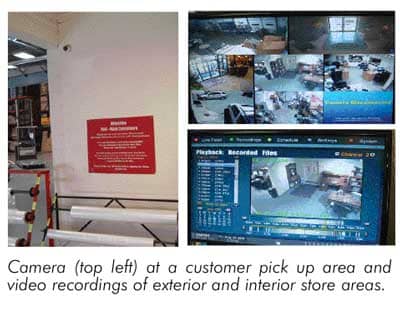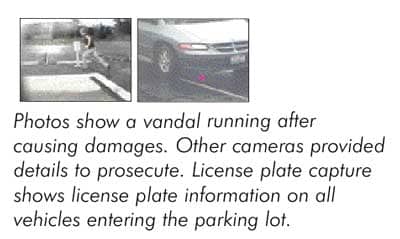What kinds of employee monitoring and process controls should you consider?
Recently, a furniture store employee embezzled $200,000 of company funds; the loss was made possible by the lack of appropriate management controls.
When the employee (let’s call her Sue), started working for the retail operation many years earlier, good financial procedures were in place. Sue seemed an ideal employee, willing to assume a heavy work load. Gradually she took on additional duties, and management gave her access to almost all the financial accounts. Despite a perfect record, personal problems caused her to “borrow” a small amount with the intention to pay it back. Over time, the amount diverted to her personal use continued to grow. By the time of discovery, the result was disastrous for her personally, her family and the company.
How confident are you that it cannot happen in your organization? This article is intended to increase your attention to the possibility of employee theft and encourage you to take necessary steps to maintain fundamental security. No store is immune.

Each year the University of Florida produces the National Retail Security Survey in cooperation with the National Retail Federation. In June they presented their 2009 findings. The survey showed total thefts at 1.44% of sales or 33 billion dollars annually. Employee theft is the largest component at $14.4 billion, 43% of the total. Shoplifting was 11.7 billion (35%). Administrative error was $4.9 billion (15%) followed by vendor fraud at $1.3 billion (4%).
All too often, routine management reviews disclose similar situations. Most of your products are easily sold by thieves or are stolen by employees to meet specific requests from their friends, associates, or even to furnish their own houses! Since you cannot operate your warehouse like a bank vault, what steps can you take to protect your investment?
Your first line of defense is to make sure that no single individual controls receiving, inventory, disbursements and adjustments. Be especially wary of the trusted employee who works long hours and never takes a vacation. Appropriate financial controls should be in place to reduce temptation to divert funds or merchandise to their personal account.
Mass thefts where thieves hijack a truck or break into a warehouse are rare. Pilferage or disappearance is more common. Pilferage may involve collusion between truck drivers and warehouse people who receive less than the full quantity of material off an inbound shipment or load "extra" products on the truck when shipping. They may also load the orders obtained through their fellow thieves employed as sales people. There are multiple ways to defend against theft and pilferage. One is a combination of physical deterrents and systems that make it difficult to break security. Another defense is to attempt to confirm the honesty of your employees.

ELECTRONIC SECURITY
Electronic warehouse security systems to protect your building when it is unoccupied can be supplied by a wide range of devices. These include window and door monitors, movement sensors, sonic alarms and strategically located video cameras. Possibly even more important is external security. Adequate lighting of exterior walls ensures that thieves don't have the cover of darkness in your parking lots and dock areas. You may also consider a gate to prevent access to the rear of the building. Whenever possible, employee parking should not be against the building.
The ability to remotely access your digital video security system via an Internet connection to your computer at any hour of the day and night is a great tool.
EMPLOYEE HIRING
Management's lack of concern for security is a major factor in thefts by warehouse and delivery people. A primary cause of theft is poor attention to the value of pre-employment screening. Personal interviews, drug screening, reference checks and criminal background reviews all have merit. The absolute minimum is a series of phone calls to verify employment dates and to ask whether previous employers would rehire your applicant. Expect some companies to only disclose the dates of employment and the job title in today's “sue everybody” environment. You, therefore, may want to use honesty tests that disclose attitudes of people who are likely to steal. These tests typically take less than an hour, can be scored quickly and are low cost.
MANAGEMENT VIGILANCE
Management can also reduce the risks of employee theft by driving around the back of the building when coming and going, checking the dumpster and walking through the warehouse at random times. Insist that your managers do the same. It takes so little time but shows employees that you are alert. Cycle counting and periodic inventories are essential.
Multiple warehouses present an opportunity for easy thefts when they are not manned full-time and when many employees have keys.
RECEIVING
Thefts may occur through a joint effort of warehouse receiving staff with vendors, trucking or shipping personnel. Receiving counting requires absolute accuracy. Many retailers receive from a copy of the purchase order and mark off the count received and also count off from the carrier's packing list. The receiving tally is the start of the audit trial. This document must contain the required information plus any exceptions such as overages, shortages and damage discrepancies. These must be noted and fully documented. Always count twice before signing once!
When everything is processed, all the receiving paperwork should be clipped together and sent to accounting to be matched with the invoice, freight bill and original purchase order terms. Receiving is both a material handling and auditing process. Bottom line, you must know you have the material ordered, the quantity ordered, items received within an acceptable time frame, acceptable quality and an accurate record of the transaction. Today's bar coded warehouse management systems have numerous features that provide control... but they are only effective when they are used consistently. Any remaining bar code labels must be turned in with the paperwork.
It may become necessary to use undercover contract employees to detect serious thefts by your employees. Undercover employees can help to inform you about on-the-job drug sales and other illegal enterprises as well.
DELIVERY
When goods are staged for delivery, everything should have corresponding tags matching the truck manifest to assure that only the correct merchandise is loaded. Some retailers use fenced cages to isolate the stock going on a particular truck.
Delivery trucks may be followed to assure they stay on route and on time. Consider using electronic tracking with GPS units that provides real time location information. Prices on these units have dropped dramatically.
A favorite tactic with identity theft perpetrators is to make major purchases with credit cards as customer pickups. You should record the license number of every vehicle making a customer pickup and note the vehicle make.
RETURNED GOODS
Review how you handle returned goods. Many furniture retailers' procedures are inadequate.
For example: A piece of furniture is picked up from the customer and never makes it back into inventory. There are several possibilities.
It makes it back to the store and even though it is fully satisfactory, it is written off as scrap or consigned to donations and disappears.
It may have been entered into inventory but was actually dropped off somewhere else on the way back. If you have the same person picking up the unit and entering it back into inventory, your risks increase dramatically. The lost unit will only show up when you are out of stock or take inventory. Then it will probably simply be written off as a discrepancy.
To prevent this from happening, all returns should go to a designated area, be reconciled daily and be reviewed by a second person.
Bottom-line, maintain adequate controls and take time to walk the warehouse and check the facility outside regular hours. Most of all, hire the most honest people you can find, yet maintain a healthy skepticism that they will always be honest.
Do You Trust Your Employees?
As a furniture retailer you want the best for your employees. You’ve known most of them for years. They are part of your team. Perhaps you consider them a kind of extended family. They work hard. You want to trust them.
That’s why making a decision to monitor your employees’ activities can be a difficult one, but retail experts advise that you can not afford to have at least minimal systems in place that are capable of catching instances of employee theft.
There are very few limits on the power of employers to monitor workplace activities including: Recording video of interior and exterior working areas; monitoring employees’ computer terminals; reading employee emails; listening to voice mails; GPS tracking of company vehicles; and collecting data on telephone and internet activity. Hardware and intelligent software is available that can allow furniture store owners with paranoid tendencies to collect mountains of data to document possible employee indiscretions. There is a downside to such invasive monitoring... people don’t like to be watched! Fortunately for most furniture retailers, an ultra-high level of surveillance and data collection isn’t necessary. There is a valid business purpose to oversight of financial transactions, employee off-site activities and inventory, so even if you may not be required to inform employees about most types of monitoring, some disclosure should be considered. They will understand, and some mention of your ability to conduct surveillance will, in many cases, be an effective deterrent.
How To Prevent Employee Theft
- Be completely honest with your employees and customers. Management must set a good example.
- Make sure that all employees are aware of the rules of the business.
- Check employees' reported hours before you sign their timesheet. Make sure that the employees have worked the hours they are reporting.
- Act on any suspicious feeling that you have toward an employee. Make sure that your suspicion is reasonable.
- Make sure that the employee parking lot is not close to the building. You don't want it to be convenient for them to move things out of the business.
- Monitor cash transactions frequently.
- Act off another employee's hunch or gossip.
- Never be too busy to monitor employees regularly.
- Never allow employees to handle their own transactions (when they purchase things for themselves).
- Never wrongly accuse an employee of theft. Make sure that accusations are investigated before you have a serious meeting with the employee.
- Never allow a lot of time to pass before you look into suspicious activity. The longer you wait, the more money you will probably lose.
Daniel Bolger P.E. provides operations consulting services to clients throughout North America. FURNITURE WORLD readers can contact him at bolger@furninfo.com or phone 740-503-8875. For more information on transportation, logistics and furniture warehousing topics, go to FURNITURE WORLD’s website www.furninfo.com to read all of Dan’s articles.